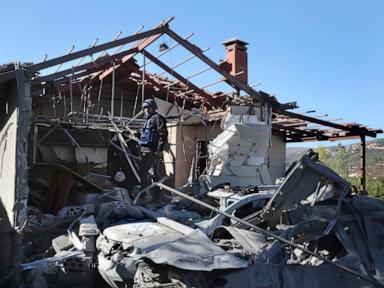ARTICLE AD BOX
The Egyptian-Italian archaeological mission working in the vicinity of the Aga Khan's Mausoleum, west of Aswan, succeeded in uncovering a number of family tombs that were not known before.
The Secretary-General of the Supreme Council of Antiquities in Egypt, Muhammad Ismail Khaled, said that this discovery is very important as it adds a new history to the Aga Khan region, especially since some of the discovered tombs still contain parts of mummies and the remains of funerary tools, which contributed to knowing more information. About that period and some of the diseases that spread during it, it also foretells the discovery of more graves in the region.
For his part, the head of the Egyptian Archaeological Sector at the Supreme Council of Antiquities, Ayman Ashmawy, said that the number of tombs discovered is about 33 tombs, all of them from the Late Period and the Greek and Roman periods, explaining that studies conducted on the remains of mummies inside them indicate that approximately 30% or 40% of Those buried there died in youth or from newborns to adulthood.
Regarding the architectural layout of the discovered tombs, he explained that some of them have a vaulted entrance preceded by an open courtyard surrounded by mud-brick walls, while others are carved directly into the mountain rock.
While the General Supervisor of the Antiquities of Aswan and Nubia and the Director of the Archaeological Mission from the Egyptian side, Abdel Moneim Saeed, stated that among what was uncovered inside the tombs were a number of mummies, including the mummy of an adult, perhaps a woman, and a child who may have died at the age of one or two years and is still alive. The two bodies are close to each other inside a stone coffin, which the mission will study in the coming period to determine the relationship between them, in addition to some remains of colored cardboard and shapes formed from burnt clay, stones, wooden coffins, and sacrificial tables.
He pointed out that, through this evidence, it is likely that the middle class of residents of Aswan Island were buried in this part of the cemetery, while the upper part of the cemetery was allocated for the burial of the upper class, pointing out that many studies and x-ray analyzes were conducted using the latest Technology on the mummies that were discovered to know the complete picture of them in terms of the shape of the face, determine the gender and age at death, and whether death was the result of an organic disease or not.
While the professor of Egyptian archeology at the University of Milan and the director of the mission from the Italian side, Patrizia Piacenti, stated that it became clear from preliminary studies on the mummies that some of them died when they were young, and some of them died as newborns until they reached puberty, and that some of them were suffering from infectious diseases. Others were suffering from some bone disorders, as it was found that the pelvis of some adult women showed signs of amputation, and evidence of this is the presence of some bone trauma, pointing out that some mummies showed signs of anemia, malnutrition, chest diseases, tuberculosis, and signs of osteoporosis.
She also explained that some of the deaths occurred at a late age and some of them suffered from severe bone diseases.
.png)
 5 months ago
6
5 months ago
6









 English (US)
English (US)